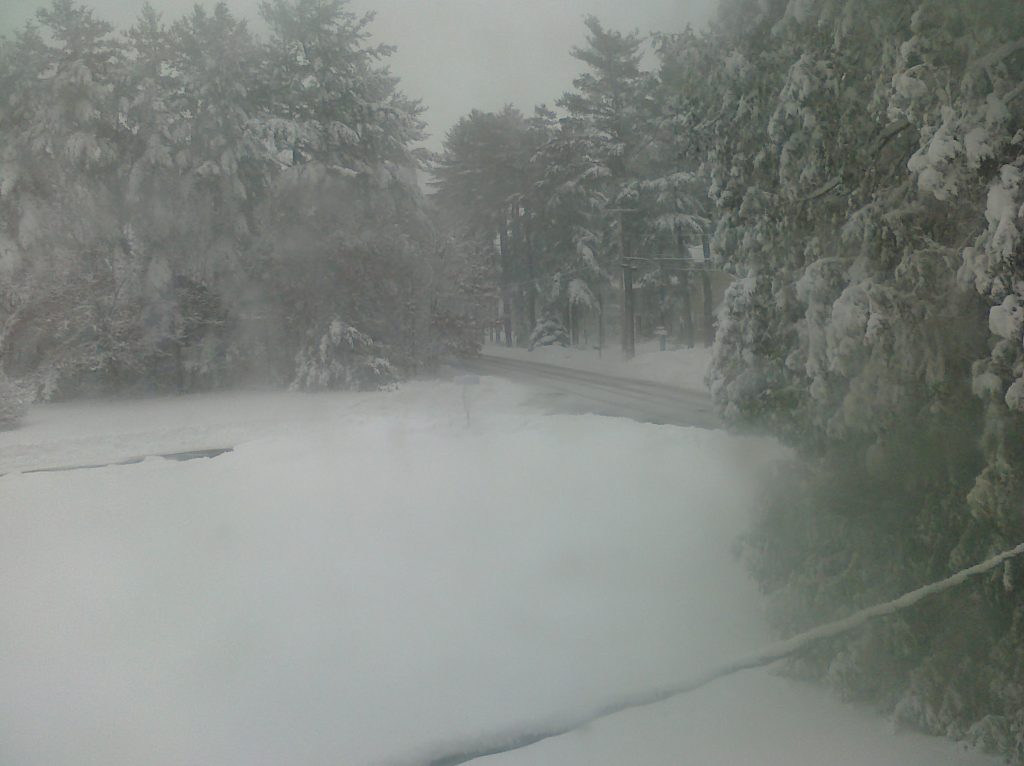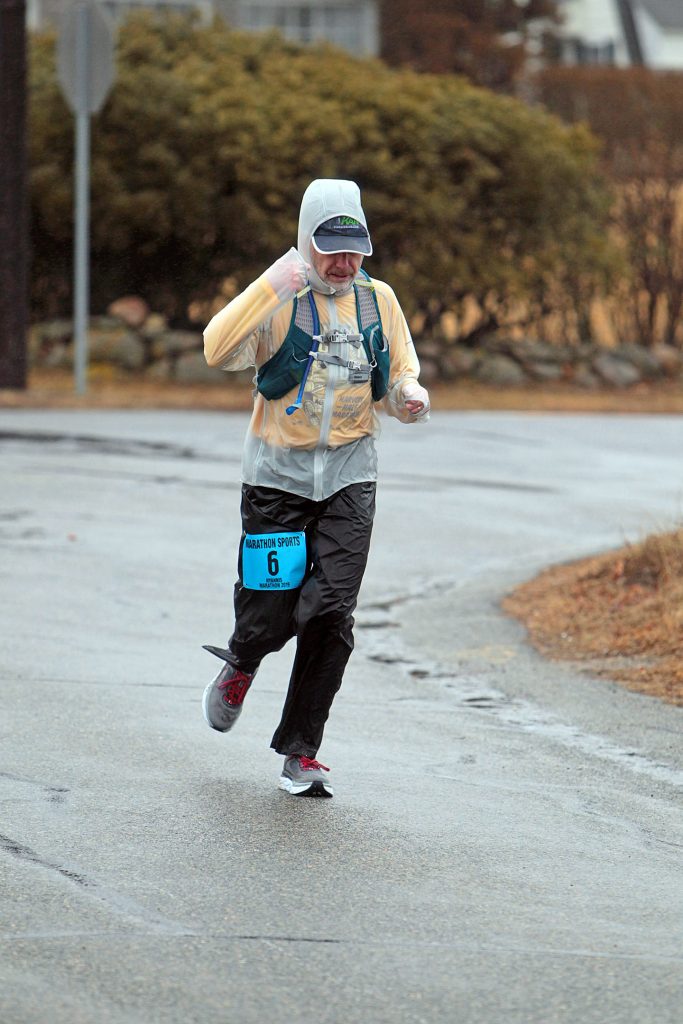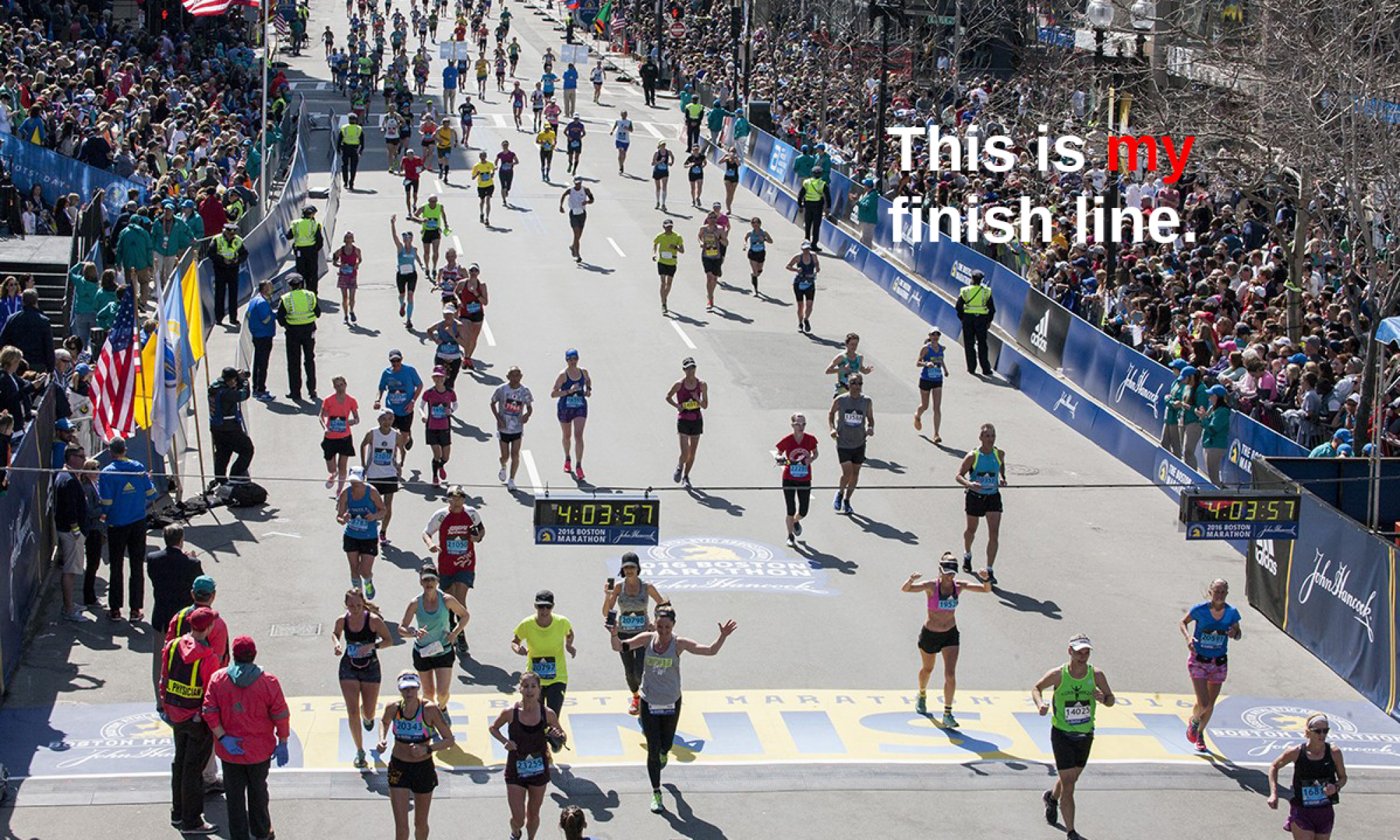
My List
Here’s what I’ve collected (so far):
- Something to carry electrolyte hydration fluid, e.g., Camelbak hydration backpack.
- Hat, sunglasses and suntan lotion. Don’t forget the suntan lotion!
- Rain shell jacket and pants.
- Sweatshirts/hoodies and pants of various thickness.
- Thinner, wind-resistant running jacket.
- Reflective tape. You need to be easily seen.
- Thin ankle and thicker, mid-calf socks.
- Running caps and gloves, and also thicker hats and gloves that you’d wear on a ski slope. I recommend gloves that are as water resistant as you can find.
- Skiing face mask and (cheap) ski goggles for the extreme cold/wind.
- Cleats that can strap onto your running shoes if the roads are icy or snow covered.
- Post-race or training run hydration.
- Road ID or similar, to help others figure out who you are,. Just in case.
Discussion
I’m in New England, so training here has a span of conditions.
- Temperatures range from below zero to 90+ degrees.
- Rain, snow, sleet, ice, etc.
- Some wildlife, e.g., turkeys, deer, foxes, and a few skunks.
We need to take the weather extremes seriously. You can’t really have exposed skin if you go out for a 10 mile run when it’s 5 degrees and a wind chill of minus 10. You need to carry hydration with you for the same run when it’s “hazy, hot and humid.” BTW, you do need to also take skunks seriously. They do not back down.
I’ve run several (as in “more than two”) half marathons where people either passed out or were in deep trouble later in the races due to dehydration. At one race, the ambulance was pulling up right behind me and we needed to clear a lane. Yikes! It’s great to see that we all will stop to help someone in distress, but it’d be better to not have it happen at all.
How much fluid do you need? I heard one stat (and this may be off) that says we can lose 4 to 6 ounces of fluid per mile. That’s somewhere around 65 (= 5 x 13) ounces for a half marathon and more for a full. How many ounces do you get at a water stop? Maybe 4 to 6? How many water stops? Say, 6 total (three out and 3 back). 6 stops times 5 ounces (average) per stop is 30 ounces. It’s less if you either don’t stop at all the water stops or dump some of the water on your head to cool off a bit. By mile 11 or so you’re down 25+ ounces and you still have a few miles to go in the heat. Not good. Imagine having 15 more miles for a full marathon. Really not good. Side note: We can’t thank enough all the volunteers who staff the water stops. They are just incredible. When they hand you a cup, say “thank you.” I (almost) always do.
“Cold isn’t all that bad?” Really? I’ve heard that people under-dress because they’ll warm up after a mile or so. Well, what happens if you’re out at 4AM on a ten mile “out and back” route in below zero weather and you pull something or twist an ankle at mile 4? You’re walking 4 miles, not really generating much heat and what you have on is at least a bit damp. I pulled up once about a mile and a half from home in below-zero wind conditions. I was glad I had on the gear to stay at least not too cold.
For the 2018 Boston Marathon, the temperature was 38 to 44 degrees, winds were gusting to 25+ mph and it was nonstop rain. I ran the February, 2019 Hyannis Marathon (my first) and the conditions were similar. Many people DNF’ed due to hypothermia. I saw one young guy in a short sleeve shirt and shorts. Me? Rain shell jacket and pants. I looked like a drowned rat trying to give the camera guy a “thumbs up.”

I didn’t have anything on my hands and my fingers were so cold after the race that my phone wasn’t registering my attempts to tap on letters to text my wife that I survived. I’ve since added water-resistant gloves to my gear collection.
Bottom line: we need to get the gear needed to deal with the conditions we train and race in. Some things aren’t cheap, but if you’re signing up for races and committing the time to train then you owe it to yourself to not sabotage your efforts.
